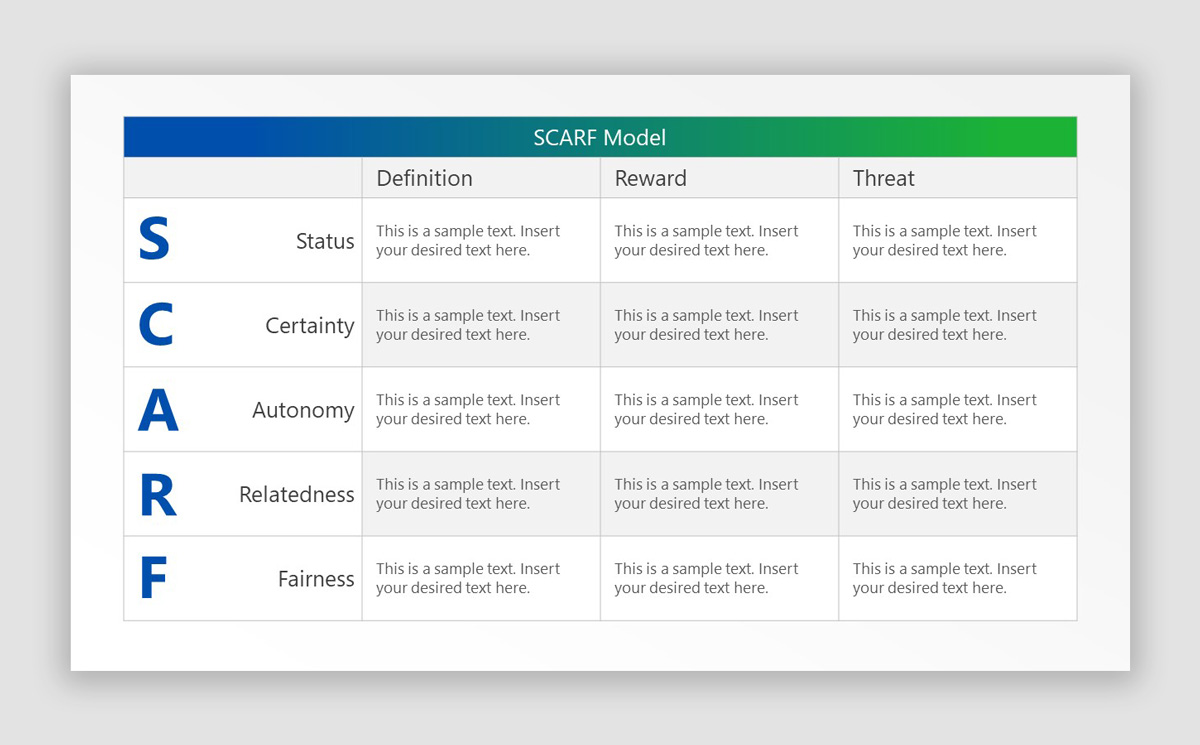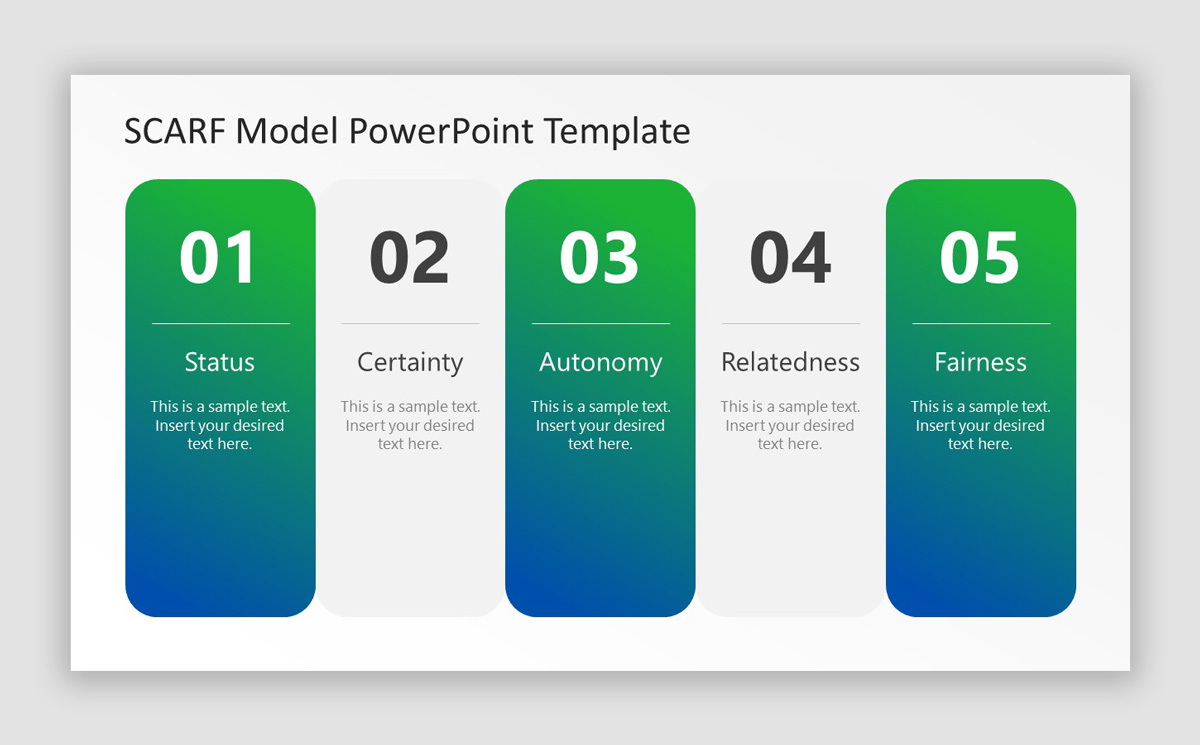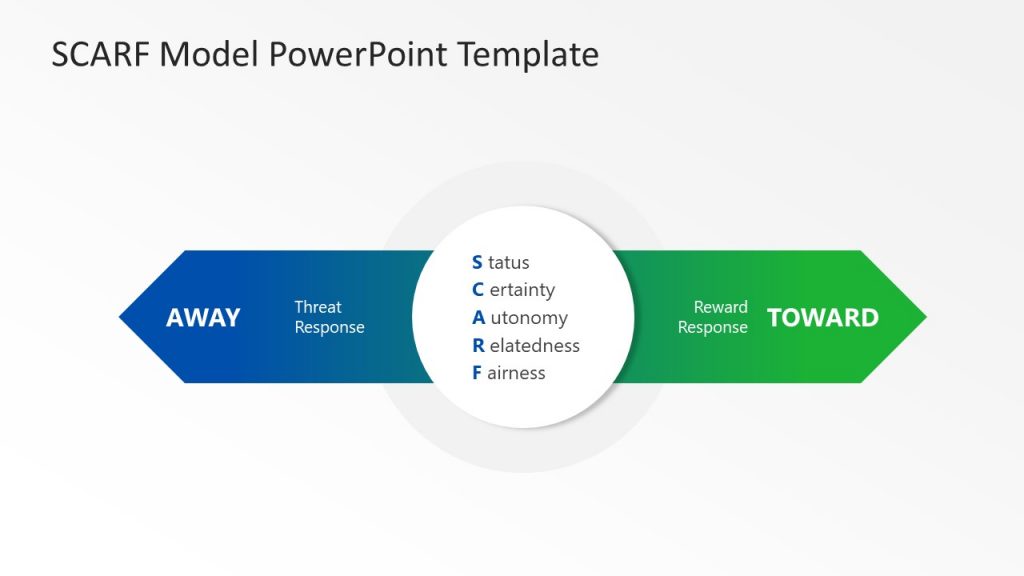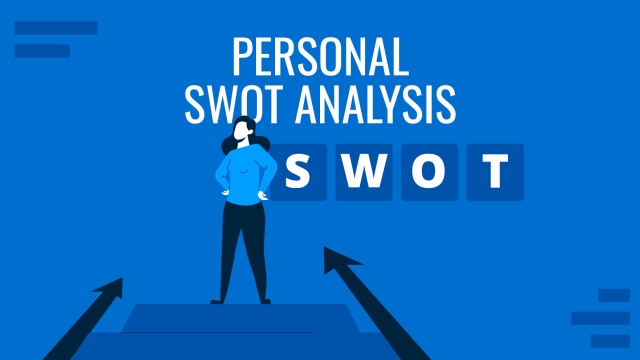
The modern workplace is like a social minefield. People can nowadays feel offended by things which would have been hard to consider offensive a few years back. Partly, this is because of increased awareness regarding social issues, however, many times people also tend to trivialize issues to appear as victims. Furthermore, employee motivation is also a major issue plaguing the modern workplace.
According to a report by Gallup titled State of the Local Workplace’, 18% of employees are actively disengaged, whereas 67% are not engaged at the workplace. The result is a $7 trillion loss in productivity. One of the best ways to tackle the modern social minefield is to use a model which is perhaps more relevant today than it has ever been. In this article we will discuss the SCARF model and its application for workplace efficiency.
What is the SCARF Model?
SCARF consists of five key areas that influence human behavior, namely status, certainty, autonomy, relatedness and fairness. The SCARF model was the brainchild of David Rock, an expert on neuroscience of leadership. He developed the model in 2008, calling it a ‘brain based model’ and explained how it can be used for influencing others. The model discusses the five key domains which are linked to human behavior and have widespread implications in social situations.
How to Apply the SCARF Model at the Workplace?
It is important as a manager to be mindful of what might be beneficial or problematic for your team members. The human brain according to David Rock is wired to minimize danger and maximize reward. Being in the state of maximizing reward can help people perform better, whereas being in the state of minimizing danger can lead to a demotivated workforce. Understanding this is key to influencing others, including people at the workplace. In the case of a manager, it can be a vital method for ensuring that the team is able to perform well and remain motivated. This is where the SCARF model comes into play.

1. Status
The sense of status can be important for people in terms of maximizing reward or minimizing danger. When one’s status is threatened, this can lead to a state of minimizing threats. However, feeling that your status is not threatened and is rather elevated can help maximize reward.
Minimize Threats: If one is given feedback from a manager or asked to correct something, the individual can feel threatened. This might make the individual in question feel stupid, incompetent and fear that it might affect his/her job. This state of anxiety or insecurity can lead to the individual arguing with the manager, instead of correcting the mistake. In such a case replacing feedback with self-assessment for correcting one’s self can help improve the status of the individual, making him/her have an elevated sense of status instead of a feeling of their status being reduced. Similarly, if an employee corrects the manager, the manager in this case might act the same way due to a feeling of his/her status being threatened.
Maximize Reward: The solution to the conundrum can be to periodically praise employees and encourage them to engage in self-assessment to correct mistakes, such as against a set checklist. Giving more responsibility with appreciation can help ensure that the individual does not feel threatened. Similarly, when dealing with a manager, it might be best to not directly correct the manager but rather suggest a review or ask if you can review something to make sure nothing is missed out. As a manager you can also look at our list of employee engagement strategies and accompany those with one of these recognition awards, as a way to honor their achievement.
2. Certainty
Uncertainty can trigger a threat response in the prefrontal cortex of the brain. This area of the human brain has implications regarding complex cognitive behavior.
Minimize Threats: The prefrontal cortex differentiates conflicting thoughts, determines good and bad options, consequences, establishes possible outcomes, etc. However, uncertainty and a sense of threat can affect the prefrontal cortex, leading to lack of focus, depression and inability to moderate social behavior. Since the brain tries to create some sort of certainty to keep us going, its inability to do so can trigger a threat response which can affect one’s behavior and ability to work. This is why certainty is important for individuals to minimize the sense of threat. The threat of being fired from a job, appearing incompetent or being insulted are all examples of how individuals can feel a sense of threat at the workplace.
Maximize Reward: Managers should try to create a sense of certainty for their subordinates. Ambiguity is bad, even at the workplace. Even if an employee’s job is under threat, such as due to losses incurred by the company, giving more information can help push the employee towards that reward state. This removes uncertainty and makes the individual better understand ground realities and look for other opportunities to estimate the time left until the next paycheck. Similarly, unnecessarily creating a sense of insecurity to make an employee work harder will have negative consequences and lead to a state of minimizing threats. Many organizations tend to lose good employees because they never get a sense of job security despite working hard amidst a culture of bullying, toxic leadership and uncertainty.
3. Autonomy
A sense of choice can be the difference between feeling a sense of threat or reward. Autonomy is therefore important to have at the workplace.
Minimize Threats: If an employee feels they have no choice, it can trigger a sense of threat due to a lack of control. The more control, the better the employee might feel. Micromanagement and taking away a sense of autonomy can be detrimental to good employee performance.
Maximize Reward: Making employees feel that they have a sense of choice, even when they don’t, can help them feel a sense of reward. If an employee has no choice regarding which task to perform among two different tasks, he/she can still feel a sense of autonomy if there is no micromanagement and the individual is given the freedom to perform the designated task freely.

4. Relatedness
New situations and meeting new people can trigger a feeling of being threatened, as meeting someone you have not bonded with can create a sense of threat as there is no sense of relatedness. The same has implications for working at the workplace.
Minimize Threats: Teams that aren’t bonded at the workplace can feel a sense of threat. It’s like meeting someone new at a party. You don’t know the person and can feel threatened. However, a handshake or a cordial conversation can help create a sense of bonding. Teams that are disconnected or not bonded can result in a sense of threat among individuals, affecting workplace efficiency.
Maximize Reward: Even multicultural teams working virtually can have a sense of bonding to work together. You have to enable them to find common ground and work towards a goal as a manager. In this case they can have a sense of relatedness through regular virtual sessions, where they share thoughts and ideas freely.
When we connect with people our brain produces a hormone called oxytocin. This is also called the love hormone and is associated with bonding. Making a teamwork towards a common goal can be rewarding, be it in the form of a feeling of job security, executing a project successfully, recognition by a boss or just the sense of getting things done with your coworkers with whom you might have developed a bond of friendship.
5. Fairness
Many people face unfair treatment at the workplace. This can trigger a negative response which can have far-reaching implications.
Minimize Threats: Fairness does not always have to be an unfair treatment to trigger a threat response. The mere feeling of being unfairly treated can do this. New managers can tend to be biased towards their favorite subordinates or might treat subordinates differently based on not only their performance but also their ethnic, religious and cultural associations. If an employee feels that he/she has been treated unfairly, it can trigger a threat response, leading to a negative opinion about the manager and vice versa.
Maximize Reward: To maximize reward, managers need to be considerate regarding how they not only treat subordinates but how they manage them. Embarrassing an employee in from of another can trigger a threat response, whereas having a polite discussion on an issue separately might not trigger such a response. Clarifying goals, expectations and hierarchy among team members can be a good way to avoid a negative response and to maximize reward.
Other implications of the SCARF Model
The SCARF model can have implications far beyond a corporate environment and can be applied in everyday life, across different professions and for self-improvement.

Horizontal SCARF Table
SCARF Model and Self-Management
The SCARF model helps people not only minimize threats but also to ensure that they are able to maximize rewards. SCARF can help people assess the specific types of experiences to maximize reward and reduce threats. You can better understand the reasons for not being able to think clearly or your erratic social behavior, depression, etc. This can help you make a self-assessment for improving your shortcomings.
SCARF Model in Education and Training
Having clarity regarding what brings you down and what makes you tick can also be effectively used for educating and training others. It’s not just about presenting a SCARF model PowerPoint presentation to explain the concept during a training session but to explain the implications from personal experience to make others understand what areas to work on for self-assessment. Successful educators and trainers know how to make people tick, form teams and to get the best out of people.

Coaching with the SCARF Model
Like educators and trainers, coaches have a tough job regarding keeping people motivated and up to desired standards. Coaches can elevate the status of people they coach through positive feedback, allow them to make improvements without creating a threat response and enable them to achieve goals through creative ways of motivating them.
Leadership Development & SCARF Model
The SCARF model can not only help people develop into better managers, coaches, educators and trainers but real leaders. Leadership is a gift that very few people are able to provide. A good leader is not someone with a natural ability to lead but one who works hard and carefully considers how to carve a path forward. This also includes understanding the qualities of a good leader, being considerate, patient, hardworking and understanding the needs of people you lead. The SCARF model can help people understand what makes a good leader and enable them to effectively maximize rewards for people they lead.
Final Words
The SCARF model can help people in their personal and professional life. If you can increase the status of an individual, help them have a sense of certainty, increase their autonomy, create a sense of relatedness and make them feel that they are fairly treated, you can increase their sense of reward. The aforementioned qualities are cherished by people and anyone who can offer them is likely to be praised, respected and loved by other people.




Would I be able to use the above article, ” Using the SCARF Model for Workplace Efficiency” in our workplace as a discussion tool for our first line leaders?
Yes, sure. Feel free to contact us to discuss further about it.